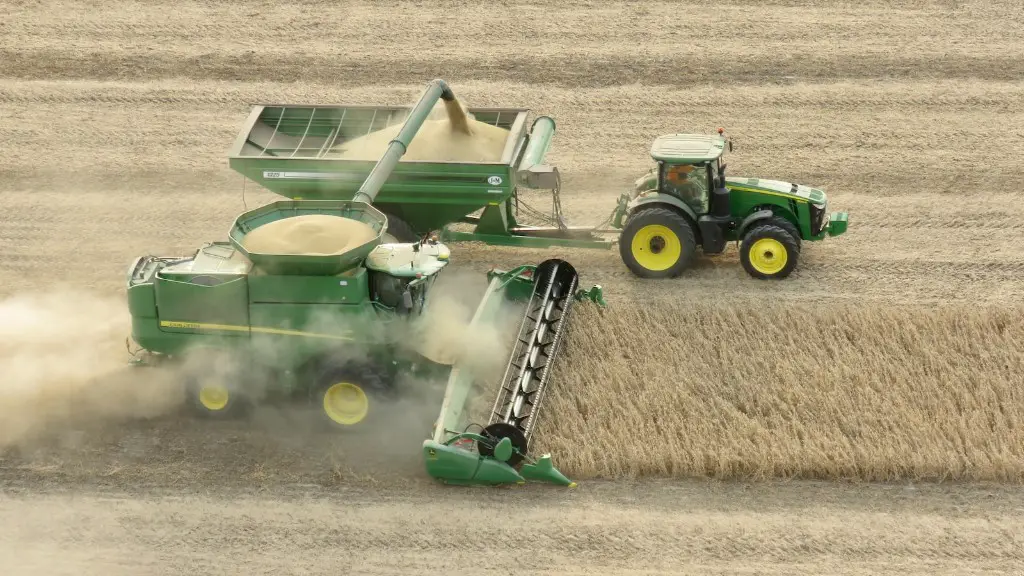The use of big data in agriculture is becoming increasingly more relevant to productivity and sustainability. By leveraging the benefits of data analysis, farmers can take their operations to the next level. This can help inform decisions related to crop selection, delivery route optimization, reduction of water usage, monitoring of soil moisture and much more. In this article, we’ll cover how big data is used in agriculture and discuss the benefits of using big data in farming.
Precision Agriculture Through Big Data
Precision agriculture uses data gathered from various sources to help farmers understand how their farms are performing and how to optimize efficiency. This data can include information about soil conditions, crop health, weather patterns, and farm equipment performance. This data is used to create models that allow farmers to track trends and make decisions about their farming operations. For example, they may be able to better determine the ideal placement of seed rows based on temperature, soil composition, and sun exposure. Additionally, they can also monitor soil moisture levels in real-time and make decisions about irrigation, fertilization, and crop rotation. This can all be done with minimal effort and at a much lower cost than traditional farming methods.
Data Analytics
Data analytics can be used to measure and improve certain farming operations. By leveraging the power of big data, farmers can gain insight into some operations that they may have not previously been able to measure. For example, big data can be used to predict and prevent pest infestations from occurring. Furthermore, data analytics can also be used to monitor farm equipment, detect soil moisture levels and level of nutrients, or identify nutrient imbalances that can lead to crop loss or poor yield.
Crop Monitoring
Another important aspect of big data in agriculture is crop monitoring. Through the use of sensors, farmers can track the health and progress of their crops in real-time. This monitoring can alert farmers to any potential problems before they can become severe. It also allows them to adjust their operations accordingly to optimize yields and minimize losses. For instance, they could adjust the amount of fertilizer, water, and pesticides used in response to changing weather conditions or soil nutrient levels.
Remote Sensing
Remote sensing technology is also being used in agriculture in order to detect variations in crop health throughout the season. Sensors are placed strategically around the farm to track crop and soil health parameters like temperature, moisture, and carbon dioxide levels. This data can be used to inform farmers of potential problems with their crops and give them an idea of where preventive measures might be necessary. Remote sensing can also be used to spot patterns in the fields, enabling farmers to be better informed about how their land is performing.
Data Driven Decision Making
Big data can also be used to make the decision-making process more efficient and effective. By using data analysis, farmers can identify trends and patterns in their operations that help them make better decisions. For instance, they can use data to determine which crop varieties will yield the most in various conditions, or which irrigation methods will yield the highest yields with minimum waste. By leveraging the power of data, farmers can ensure that their decisions are informed and effective.
Robotics and Automation
Robotics and automation can help reduce the physical labor needed to operate a farm. Automation can be used to monitor soil health, water levels, and crop health. This can reduce the need for manual labor and increase efficiency. Additionally, the use of automation can also make it easier to manage larger farms with fewer workers. By leveraging robotics and automation, farmers can reduce labor costs and increase efficiency.
Artificial Intelligence
The use of artificial intelligence (AI) in agriculture is also becoming more widespread. AI can be used to analyze data from various sources, such as soil sensors, weather conditions, and farming equipment performance. This can be used to automate some of the decision-making processes on a farm, such as detecting pest infestations before they become severe. Additionally, AI can be used to identify patterns in crop and soil health, which can be used to optimize efficiency and yields.
Predictive Modeling
Predictive modeling is another benefit of using big data in agriculture. Predictive modeling uses data to build models that can predict how crops and soil will react to certain conditions. This can help farmers plan for future operations, such as irrigating fields or deploying fertilizers. This can lead to higher yields and better farm management, resulting in fewer losses.
Cloud Computing
Cloud computing is also being used in agriculture to help farmers streamline their operations. By leveraging cloud storage and computing platforms, farmers can securely store data about their operations. In addition, the use of cloud-based apps can help farmers track data, monitor performance, and identify trends. This data can then be used to enhance operations and optimize efficiency.


